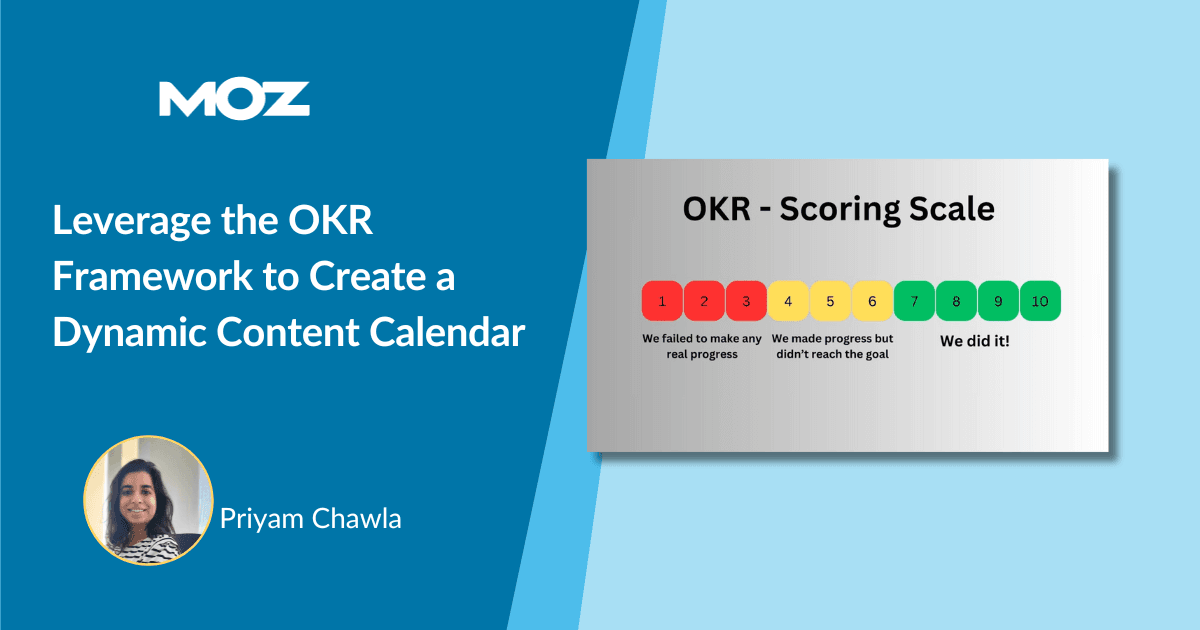1. Define content objectives:
Start by identifying the overarching content objectives aligned with your business goals. For example, if a business goal is to increase brand awareness, a corresponding content objective could be to enhance online visibility, or if the business goal is to generate leads, then the related content objective could be to drive downloads of lead magnet content like ebooks or whitepapers. You can even have multiple content objectives for different business objectives.
2. Set key results
Under each content objective, establish key results that are specific, measurable, and time-bound. These could include metrics like website traffic, time spent on the website, downloads, or lead generation from content. Remember to add KPIs for each of these key results; for example, increase website traffic by 20% from the previous quarter.
3. Create specific initiatives for each key result
Break down the key results into actionable content initiatives. For instance, continuing from our previous example, for the key result to increase website traffic, content initiatives could involve doing keyword research to identify relevant keywords with enough volume, developing an editorial calendar including blogs, infographics, and videos, and elaborating on-page SEO, off-page SEO, and technical SEO and designing the content distribution strategy.
Try out Keyword Explorer
4. Assign responsibilities
Clearly assign responsibilities for each content initiative to team members or departments. Ensure that everyone is aligned with the key results, agrees with the strategy, and understands their role in contributing to the key results.
5. Regular check-ups and iterations
OKR alignment
Design a schedule for regular check-ins. Check-ins and reviews within the OKR framework involve reviewing progress toward your objectives and key results. Often, weekly or fortnightly check-ins are scheduled to ensure everyone is on track to achieving them. In content planning, this translates to consistently assessing whether your content aligns with your defined content objectives and whether it’s contributing to achieving them.
Content performance evaluation
To make these check-ins effective, it’s essential to go back to the metrics and KPIs you set up. Analyze how your content is performing against these metrics. Are you meeting your key results? Are there areas where you’re falling short? Identify what’s working and what needs improvement.
Content review meetings
Drawing from the OKR concept of regular meetings to discuss progress, your content team can conduct structured content review meetings. These meetings can encompass a range of topics, including content performance, audience engagement, and alignment with business goals.
Performance metrics: Dive deep into the data. Analyze metrics such as website traffic, conversion rates, social media engagement, and email click-through rates. Are these metrics meeting your key results? If not, what adjustments can you make?
Audience feedback: Listen to your audience. Are they engaging with your content? Are there comments, questions, or feedback that can inform your content strategy? Incorporating audience insights can lead to more relevant and impactful content.
Competitor analysis: Benchmark your content against competitors. What are they doing well? Are there content gaps you can fill? Analyzing your competition can help you refine your content strategy.
Perform Competitive Research in Moz Pro
6. Retrospectives and scoring
Another important component of the OKR framework is to score your achievements and openly evaluate what went wrong, what went right, and what could be improved at the end of each quarter. This will ensure your content calendar stays dynamic and is adapted according to performance.
Performance on each objective is scored from 0—10. Anything 7—10 is considered a green (Achieved), 4—7 an orange (partially achieved), and 1—3 a red (failed). This scoring aims to self-evaluate your and your team’s performance, analyze what went wrong and what went right, celebrate successes, and understand what can be improved. Every team and team member has a lot to gain by adopting this culture of non-punitive evaluation.
